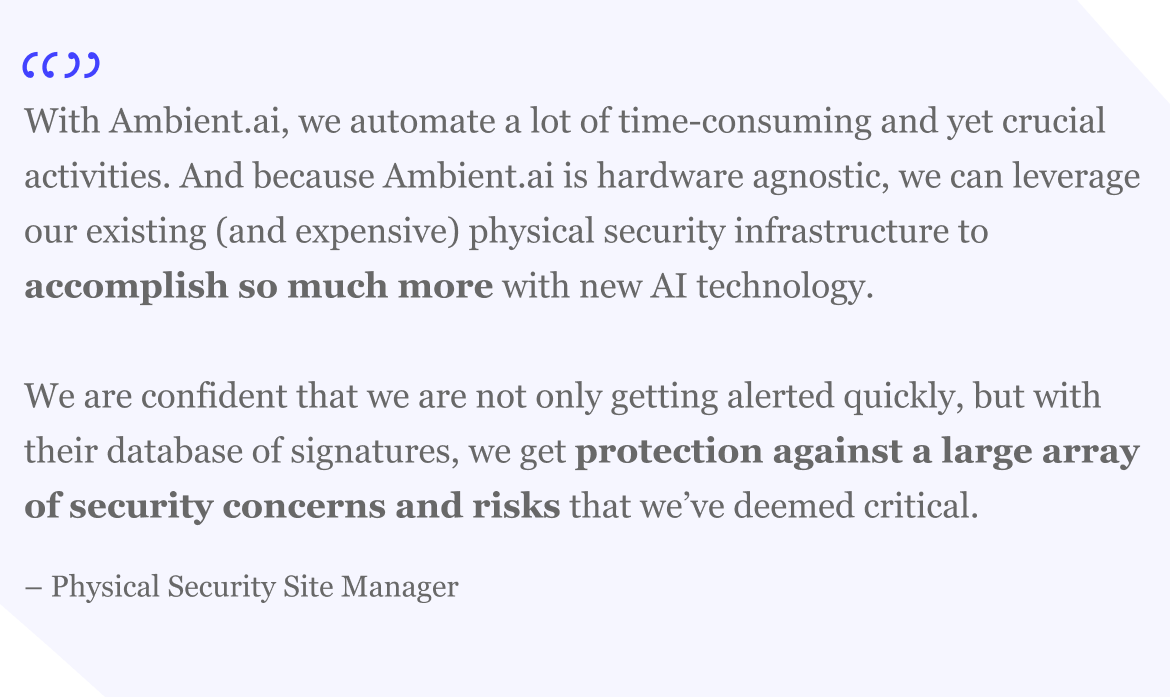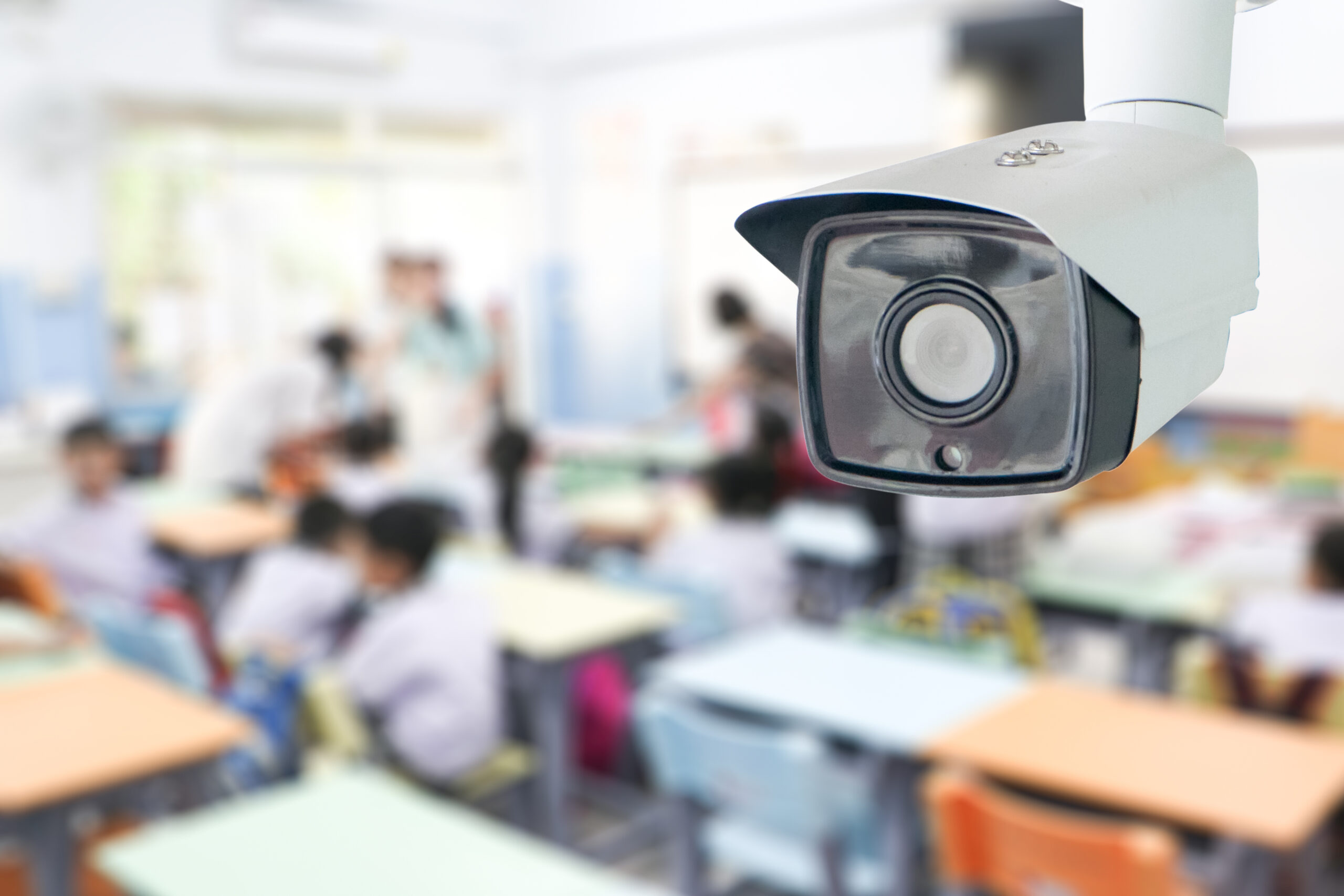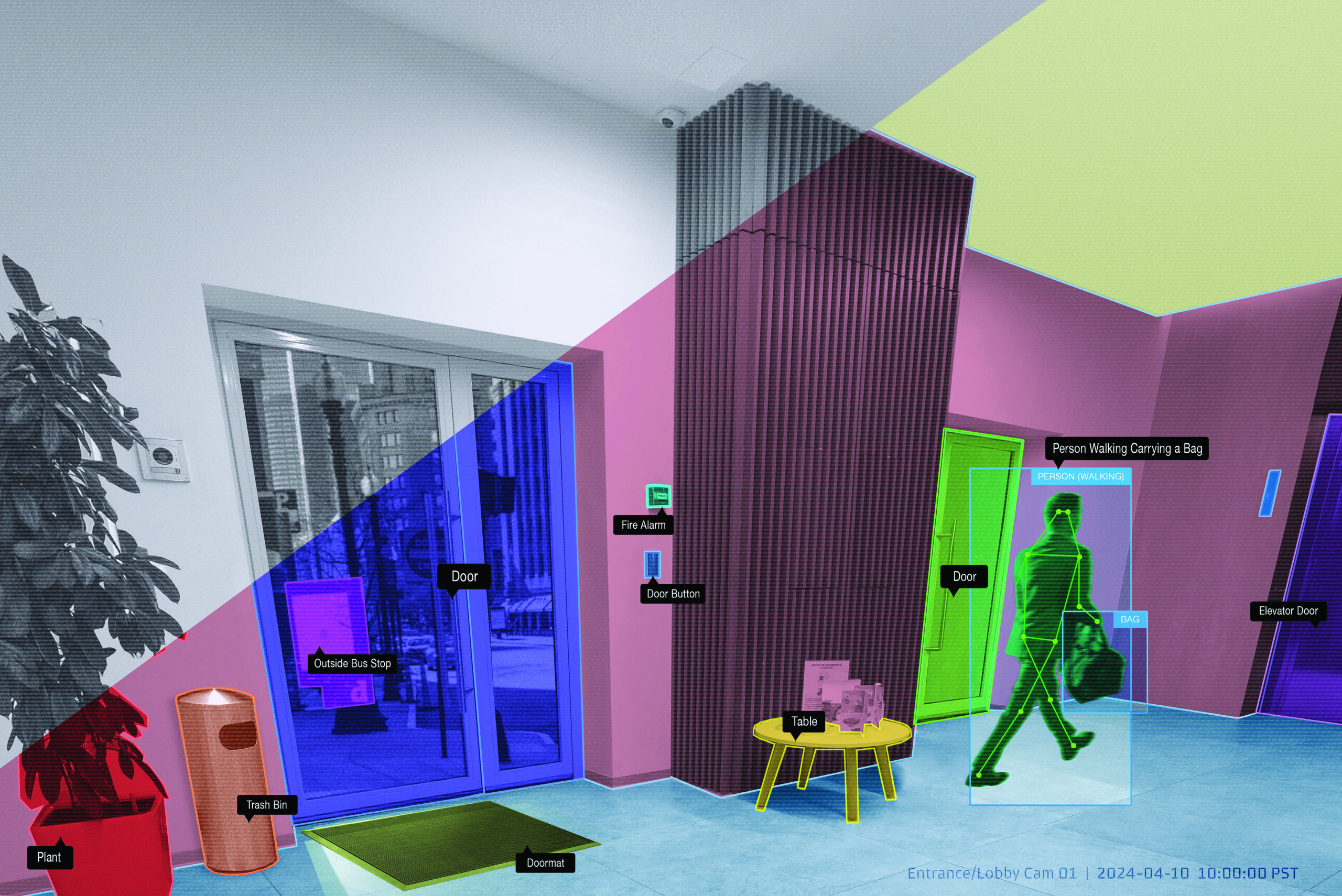In the complex web of contemporary physical security challenges, risk mitigation becomes critical for organizations to safeguard their people, property, and assets.
The landscape’s growing array of threats — from traditional concerns like unauthorized access to more sophisticated issues like advanced intrusion methods — underscores the imperative to understand, implement, and continually refine risk mitigation strategies.
In this article, we’ll explore everything you should know about risk mitigation: why it’s necessary, strategies to consider, how to develop a risk mitigation plan, and where AI enhances these efforts.
Table of Contents
- What is risk mitigation?
- Why do you need risk mitigation strategies?
- Physical security risk mitigation strategies to consider
- How to develop a risk mitigation plan
- How to mitigate risk with AI
- Upgrade physical security with Ambient.ai
What is risk mitigation?
Risk mitigation involves a multifaceted process that includes identifying, assessing, and prioritizing potential risks. Following this, organizations then deploy strategies to minimize or eliminate the impact of these risks on their operations.
In physical security, risk mitigation encompasses measures to address a broad spectrum of threats, ranging from health and safety concerns to incidents related to theft and intrusion.
Risk mitigation functions to address potential threats before they occur, yet this process goes beyond just risk avoidance. Risk mitigation also minimizes the impact of negative events, ensuring the stability of your organization’s physical security operations.
Why do you need risk mitigation strategies?
The need for risk mitigation strategies arises from the ever-evolving landscape of threats, where security personnel must remain vigilant and nimble. The goal is to address identified risks before they materialize. Implementing effective strategies protects against existing risks and prepares your team to confront future challenges.
As a whole, risk mitigation is key to proactively tackle threats. Reactivity exposes your team to vulnerabilities and leaves them ill-prepared in securing your organization; no security team wants to constantly address threats after the damage has already been done.
Physical security risk mitigation strategies to consider
An optimal approach to risk mitigation is a layered approach, where multiple security measures and strategies combine to holistically protect your organization. Here are several key strategies to consider in properly mitigating physical security risks:
- Surveillance systems: Advanced surveillance systems, including CCTV cameras and motion sensors, improve the monitoring capabilities of your physical security team. However, the role of cameras within the security infrastructure has undergone a rapid evolution in recent years. Previously, when faced with an overwhelming amount of activity to monitor, cameras were primarily used for recording incidents and investigating situations after they had transpired. With the emergence of AI technologies, the landscape has shifted. An increasing number of security teams now use cameras for proactive mitigation. AI, constantly surveilling the feeds, ensures that no volume of activity is too vast for teams to monitor. More on AI technologies later.
- Incident response plans: Developing comprehensive incident response plans is essential for mitigating risks. These plans outline the steps that employees should take in the event of a security incident, minimizing the impact and facilitating a swift recovery. Most importantly, incident response plans should be dynamic; they must continuously evolve in lockstep with the threat landscape, technological advancements, and organizational changes. In turn, these plans should be periodically updated.
- Perimeter security: Securing the perimeter of a facility involves using physical and electronic measures to protect the boundaries. Physical barriers may include fences, walls, and gates. Electronic security systems may include perimeter intrusion detection systems (PIDS), video surveillance, and access control systems. There are now many different perimeter security systems and technologies available. It’s a comprehensive topic; check out this guide for an in-depth overview. To hear insights straight from perimeter security experts, check out this on-demand webinar.
- Access control systems: Implementing robust access control systems is fundamental to physical security. Physical access control systems dictate who has access to a facility, raising alarms when unauthorized activity compromises security. These systems restrict entry to authorized personnel through measures including key cards, biometric scans, and security badges.
- Security personnel training: Well-trained security personnel are adept at identifying and responding to potential threats effectively. Regular training sessions ensure that security teams stay updated on the latest security protocols and are well-equipped to handle diverse scenarios. Investing in the professional development of your staff keeps them engaged in their work and uplifts employee retention in the long run.
How to develop a risk mitigation plan
Creating a robust risk mitigation plan involves a systematic approach. A risk mitigation plan might include:
- Risk assessment: Identify and evaluate potential risks specific to your organization. Analyze vulnerabilities in your physical infrastructure, assess possible threats, and understand the impact of security incidents.
- Prioritization: Once you’ve identified a list of potential risks, prioritize them based on their likelihood and impact. This way, your team can strategically allocate resources to address the most crucial vulnerabilities first.
- Strategy formulation: Develop tailored, targeted strategies that will address each of your identified risks. This may involve a combination of technological solutions, procedural changes, and employee training. The more holistic and layered your approach, the better.
- Implementation: Execute your defined risk mitigation strategies in a phased manner. This process could involve upgrading security systems, facilitating training sessions for personnel, and strengthening physical infrastructure with brand-new technologies.
- Continuous monitoring and evaluation: Regularly monitor the effectiveness of your implemented strategies, making adjustments as needed. A dynamic approach to risk mitigation ensures that security measures remain aligned with evolving threats.
How to mitigate risk with AI
We are watching in real-time as AI forever changes physical security operations — and that includes mitigating risk. AI improves threat monitoring and detection across cameras and sensors, streamlines alarm management, and maximizes the impact of your security team.
AI gives your entire physical security infrastructure an upgrade so that your organization is better equipped to minimize the impact of potential risks.
AI provides these capabilities for more effective risk mitigation:
- Proactive threat monitoring: AI converts every single camera into a fully monitored endpoint, leaving no threat undetected and no camera unwatched. From people brandishing firearms, to perimeter breaches, to property theft, and much more, AI looks for a range of threats in real time with a deep understanding of the context around events.
- AI-powered alarm management: Streamlined alarm management liberates operators from sifting through thousands of alarms each day. AI correlates the activity on camera feeds with each alarm event to visually validate if an actual incident has happened, auto-clearing the alarm if false.
- Maximized the impact of your team: With less time spent on noisy alarms and inaccurate detections, Ambient.ai enhances the productivity of your entire team and their ability to mitigate physical security risks. Valuable insights into threats help you identify weaknesses in your defense, optimize guard deployment, and ensure effective patrols.
Upgrade physical security with Ambient.ai
Ambient.ai delivers AI-powered computer vision intelligence to help organizations reduce risk, improve security operation efficiency, and gain critical insights.
With Ambient.ai placed at the center of the physical security apparatus, unifying security infrastructure and enhancing security posture, security teams are better equipped to solve their most pressing challenges.

From important cultural institutions, to massive tech giants, to expansive manufacturing sites, and more, we’re proud to help some of the world’s most significant organizations achieve proactive, automated security operations.
Teams who use Ambient.ai see these results:
- 90%+ reduction in access control alarms
- 10x faster real-time responses to threats
- 100% of cameras monitored 24/7
Explore the impact that Ambient.ai’s AI-powered physical security technology can have on your operations.












